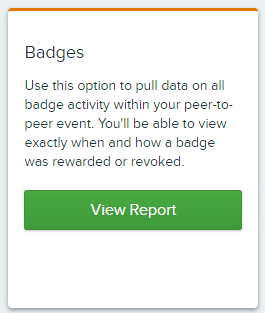While peer-to-peer donor retention shouldn’t take up the bulk of your time, it’s worthwhile to try to retain your peer-to-peer donors. Why? Because by retaining these donors you make it possible to acquire new supporters to your cause and potentially grow your giving. Not to mention, these donors could help fundraise on your behalf at your upcoming peer-to-peer events. While many give to support friends or family, there are those who give who care about your mission and want to see you benefit from their donations. These are the peer-to-peer donors who go on to fundraise on your behalf and even become long-term supporters of your mission. But you can’t retain them without a little bit of effort.
What is donor retention?
The first question that we need to answer is about what donor retention is. Donor retention is a measure of how many donors you’re able to keep year after year. Some donors give once and never give again, while others can be counted on to give for many years. Others might even make plans to give throughout and beyond their lifetime.
Why does donor retention matter?
Donor retention matters because your nonprofit can spend fewer dollars on donor acquisition and instead apply more funding toward achieving your mission when you have a good donor retention rate.
That said, to see a good donor retention rate above the average of 45%, nonprofit organizations need to implement a process for retaining their donors. How can you make donors stay? Peer-to-peer donors have abysmally low donor retention rates. This group of donors is often giving because of friends or family encouraging them to give, not because they have an interest in your mission. To make these donors stay, you have to make them care about your mission and want to support your cause directly. That means putting forth a little effort to ensure that you’re reaching out and introducing yourself and your cause to this group of donors.
What is an acceptable donor retention rate?
An acceptable donor retention rate is going to vary from nonprofit organization to nonprofit organization. You will always have different types of supporters who have different levels of love for your cause. Generally speaking, though, a good donor retention rate is anything higher than 50%. At that point, you’re keeping the majority of donors who give to your organization and they’re making gifts to sustain your nonprofit. However, you may set the bar higher if you’re focusing on recurring givers who have a potential donor retention rate of 80% in the first year and as high as 95% if retained after that first year. But most likely, you’ll have a variety of donors that you’re going to try to retain. That can mean accepting a lower donor retention rate and working to improve overall donation retention rates over time with more outreach and personalization. Use the following tips to help you retain more of your peer-to-peer donors.
Peer-to-Peer Donor Retention Tips
- Help fundraisers tell their stories in their favorite channels
- Remove any unnecessary steps during registration
- Ensure you have a friction-less mobile experience
- Have built-in milestones for fundraising
- instant gratification and public praise
- Deliver content based on milestones
- Invite them to an exclusive community for support
- Thank them immediately, then focus on what they made possible
- Make sure everything is accurate online
- Engage during the off season
- Encourage recurring donations
1. Help fundraisers tell their stories in their favorite channels
Making it easy for peer-to-peer participants to tell their stories about why they’re supporting your organization is important. One great way to do this is to provide social media templates! Include information about your organization and some direct impact numbers. Giving your participants this information right off the bat makes it easier for them to show the difference donors can make. For example, you could have a template like the following available for your participants:

If you’re not using a program that lets you set up templates in the system, consider emailing some templates and examples to your participants. If you’re using Qgiv, you can create templates for Facebook and X right in your control panel. They’ll appear in the personal fundraising center, where individual participants can edit them to add a personal touch.
2. Remove any unnecessary steps during registration
Registrants want a smooth and easy registration process! Try to make it as seamless as possible to improve conversion rates. Avoid asking too many questions during registration. Sure, you can ask for their tee shirt size… but also asking how they heard about the event, if they have participated before, if they have any food allergies, etc. can be off-putting and cause a drop-off in registration numbers. If you’re hosting an annual event, one great thing about Qgiv is that once someone registers for your event, they can log in for next year’s with the same username and password without having to set up a new account.
3. Ensure you have a friction-less mobile experience
You’ve heard it before, you’ll hear it again… everything needs to be mobile-responsive! According to Nonprofit Source, 25% of donors complete their donations on mobile devices. Sure, donors need to have a smooth experience on mobile devices, but so do your participants! Make sure your event registration process and individual fundraising account management look good on mobile. Sign up for the event yourself to test it out!
4. Have built-in milestones for fundraising
Encouraging people along the way as they reach fundraising milestones is a great way to keep them engaged and inspired. Awarding fundraising badges is one fun way to do this. Qgiv offers default badges and gives you the ability to create your own based on milestones. Want to award a badge when someone reaches 20 individual donations? No problem! You can even set badges up to be automatically awarded.

You can also send out email campaigns that are triggered by certain fundraising accomplishments. For example, you can set up an email to go out when a participants reaches 75% of their fundraising goal. The email can thank them for their hard work and encourage them to keep it up.

5. Instant gratification and public praise
Those badges we talked about? Yep—that checks this box! But you can go a step further and sign yourself up for notifications so you know when someone reaches a certain percentage of their fundraising goal. You can then include their name in a social media post to praise participants who have reached fundraising milestones.
There’s a super simple way to see who has been awarded which badges in Qgiv. All you have to do is download a badge report!

The report includes participant names, badge name and date/time awarded, and whether it was awarded or revoked. Depending on your level of familiarity with your participants, it could be fun to post messages creating friendly competition. For example, if you have a company participating, you can let a participant know that one of their coworkers was awarded the Top Fundraising badge, which means theirs was revoked!
6. Deliver content based on milestones
In addition to setting up fundraising milestones and praising your participants, you should set up some content to go out along with those milestones. When you send out the previously mentioned 75% of fundraising achieved email, be sure to include some tips for how participants can appeal to potential donors to raise that last 25%. The emails in our Email Campaigns tool are easy to customize, so you can include tips, tricks, images, and more.
7. Invite them to an exclusive community for support
Try setting up a private Facebook group for your event participants so they can support and encourage each other. Make sure someone at your organization is available to monitor the group and answer questions about the event (and to offer words of praise and encouragement!). You can even set up groups after your event. Just 10% of event participants bring in 55% of the dollars, so treat them right!
A great example of creating an exclusive community comes from NuPath, Inc., who hosts a big event for their top 50 fundraisers. Those top 50 fundraisers are known as Club 50. One of NuPath’s most effective strategies is investing in Club 50 to show that they’re valued and appreciated to keep them coming back year after year! NuPath engaged Club 50 members early on to kick off their walk fundraising, and people became highly competitive as they vied for a spot in the exclusive club. Fostering a healthy sense of competition paid off! In 2015, the number 50 fundraiser raised about $320 dollars; in 2016, the bottom line was $560!

8. Thank them immediately, then focus on what they made possible
We all know (at least we hope you know) that thanking event participants and donors immediately is important. But it’s equally important to follow up for a few months after the event to let them know what their participation and/or donations made possible! Did the funds from your event go to build a new veterinary clinic at your animal shelter? Send out construction updates and invite participants and donors to the grand opening!
An easy way to get your participant and donor emails from Qgiv into your email program is by using one of our integrations. If you use MailChimp, Constant Contact, Campaign Monitor, Klaviyo, or Emma, you can easily export participant/donor names and email addresses to email lists of your choosing. That way, you can send targeted post-event messaging.
9. Make sure everything is accurate online
Did you host an event last year? Try Googling this year’s event to see if last year’s pops up. Donors might (not might…WILL) try clicking last year’s event to make a donation. Oops! If you’ve left last year’s event site up, you can avoid this problem by redirecting anyone to this year’s site. You can easily do this in Qgiv by going in to the control panel of the old event, clicking “Event Settings,” and entering the current event’s URL after configuring your redirect settings.

10. Engage during the off-season
Your participants want to be engaged… not just during event season! To keep the ball rolling, consider administering a post-event survey. Make sure you only ask questions you know you can use to improve next year’s event. Once you collect information, be sure to follow up with participants and tell them how you’re changing next year’s event based on their feedback. You can also use the previously mentioned Facebook group to obtain feedback for improvement. It would be a great way to provide a sneak peek a few months before an event, as well.
You can also keep new peer-to-peer donors and fundraisers engaged with an email welcome series introducing new donors and fundraisers to your nonprofit organization. Informing them about what you do and why is a great way to attract long-lasting support from your peer-to-peer donors.
11. Encourage recurring donations
As we previously stated, recurring donors have much higher rates of retention than one-time donors. An often overlooked way of retaining peer-to-peer donors is by encouraging them to make recurring donations. While one-time donations are more common with peer-to-peer, if you can make donors care about the cause and encourage them to support you with a monthly gift, they may become long-term donors rather than one-time peer-to-peer donors.
To encourage recurring gifts, first make sure that recurring giving is an option on your peer-to-peer online fundraising platform. Then, encourage your fundraising participants to push for recurring donations when they reach out to friends and family for donations. Provide materials that show the impact donations are having at your nonprofit organization and be sure to share a story or two about how recurring donations have helped make a difference in your beneficiaries’ lives. By introducing your nonprofit organization and sharing why you need the funding, you’ll be more likely to attract recurring donors during your peer-to-peer event.
Conclusion
Peer-to-peer events aren’t just set-it-and-forget-it fundraisers. In the long run, putting in some extra time is worth it! You’ll gain loyal supporters with a network of friends and family who are more likely to donate… all because you kept participants engaged by providing tools to make it easier for them to raise funds!







